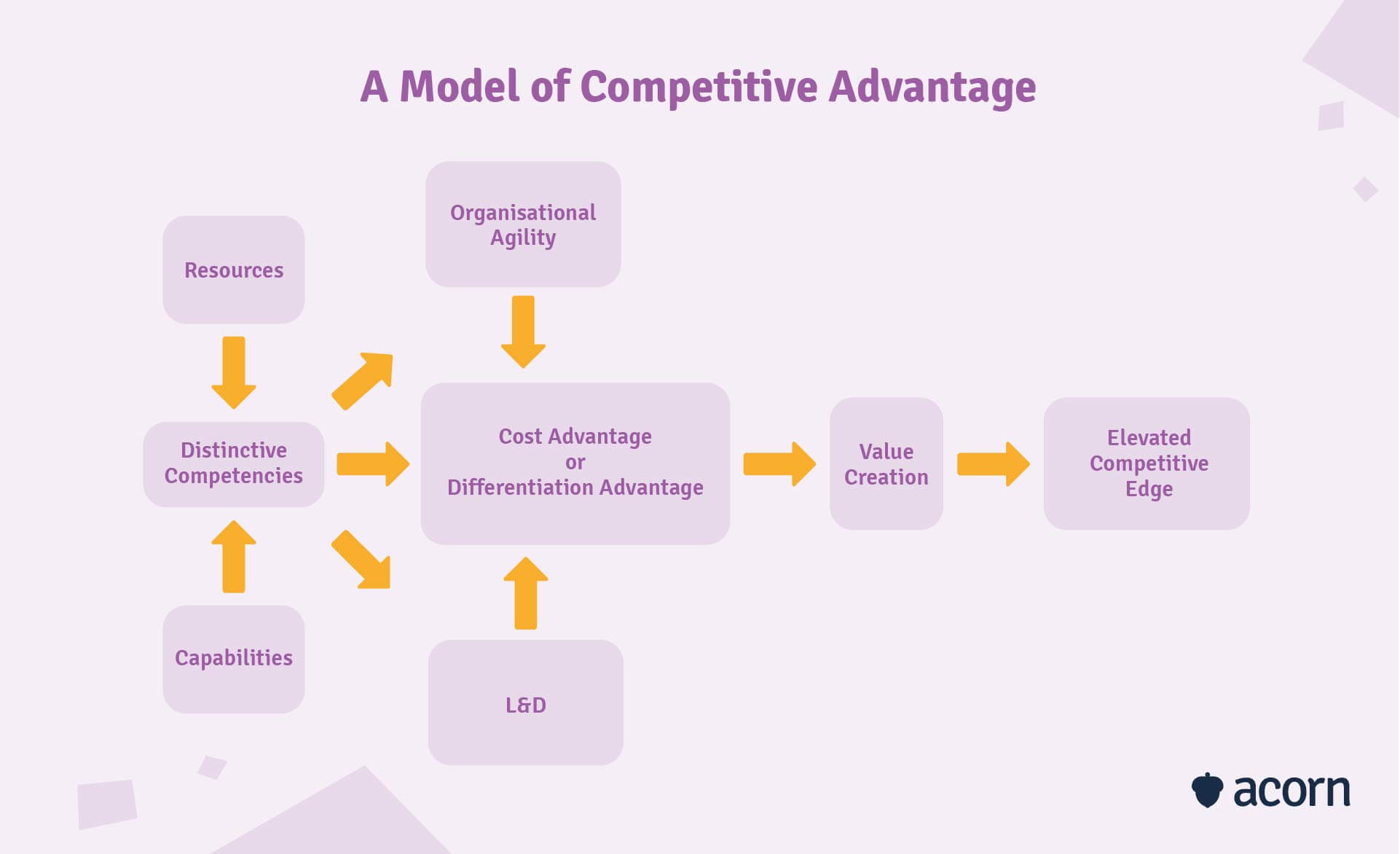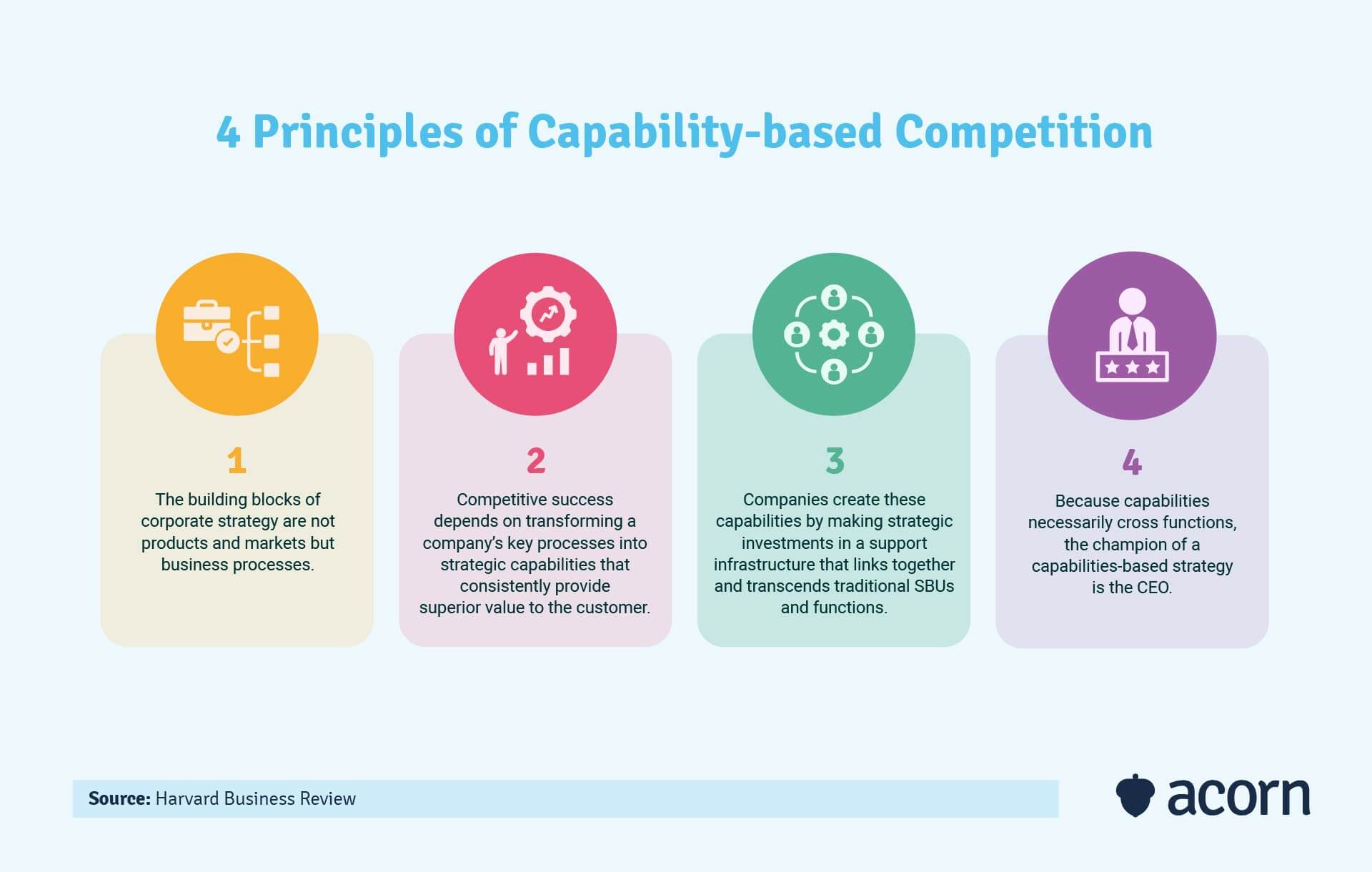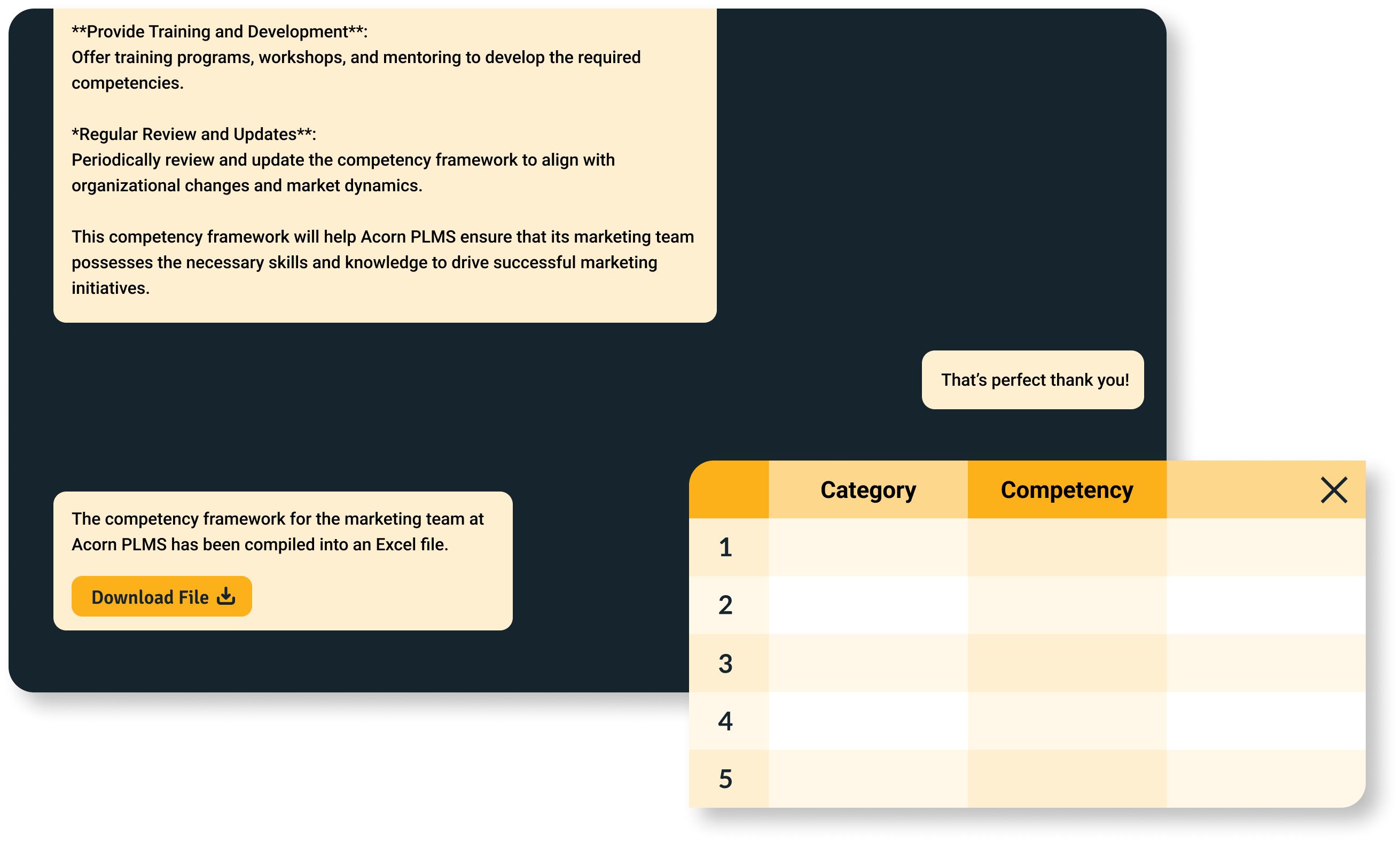Competency vs Capability: What’s the Difference?
Reading Time:

Lead the pack with the latest in strategic L&D every month— straight to your inbox.
SubscribeCompetency refers to the level of skill towards a task while capability is the capacity to perform a task.
Both speak to human abilities, but what is the difference between a capability and competency in the workplace?
In short, one is a measure of effectiveness, and the other evaluates performance. A capability is a group of skills, knowledge, behaviors, and tools that get work done. Competency assesses how well those skills, knowledge, behaviors, and tools are used to get that work done.
Still confused? We explain more—plus why capabilities and competencies both matter in the workplace—in this article.
What is a competency?
Competency is a measure of how someone performs a set of knowledge, skills, and behaviors to successfully carry out a task in the workplace.
As a measure of an employee’s ability to perform the work expected of them in their job role, competencies are generally used to assess capabilities for succession planning and talent decisions.
What is an example of a competency?
The Learning and Performance Institute (LPI) Capability Map has five measures of expertise:
- No experience. Speaks for itself, you simply don’t have experience with the capability.
- Foundational. You have use the capability with guidance.
- Proficient. You can use the skill by yourself.
- Advanced. You support others in developing the capability.
- Strategic. You use the capability to set strategy and business practice.
We use the term proficiency to define expectations and performance indicators. That’s because:
- Competency can be used interchangeably with capability, depending on the industry.
- Competency can be read as binary—as in, you’re either competent or not. Proficiency implies levels of mastery, from beginner to expert.
- Competency frameworks and models often carry bureaucratic baggage; proficiency signals something more practical and dynamic.
- Proficiency pairs cleanly with capabilities: capabilities = what you do, proficiency = how well you do it.
All in all, though, the more senior the role, the more complex the skills, knowledge, and behaviors expected of an employee.
What is a capability?
A capability is a grouping of critical knowledge, skills, tools, and behaviors that drive organizational success. In the workplace, it defines what is expected of employees in various job roles to achieve strategic business goals.
What is an example of a capability?
Capabilities describe a tangible outcome. A few examples of a capability include:
- Training ROI Measurement
- Chatbot Management
- Employee Retention Strategies
- Budgeting and Forecasting
- Project Management.
If you’d like to browse the largest list of capabilities around, check out our free Capability Library.
Organizational capabilities vs competencies
Perhaps the biggest difference between capabilities and competencies is how they’re used in an organization. Organizational capability usually starts with the CEO. When dealing with a new future of work, the CEO has to consider how their company can optimally use cash flow and people to execute on strategy.
If the CEO uses competencies to plan for the future, they’re setting a fixed goal. There’s a cap on competency, an upper limit to the standard the organization is capable of. Not to mention, competency can’t be a strategic driver since a) it’s limited to certain areas of expertise and b) competence needs an outcome against which it can be measured.
But if they take a capability-led approach, the CEO can build a framework for performing in an uncertain future. This is because capabilities are stable and not impacted by the complexities of the business environment. They’re also made to measure for the ideal workforce, focusing on the tangible outcomes of each individual’s work.
This is a big reason behind why we pioneered the performance learning management system (PLMS). Legacy LMSs have perpetuated the idea that the solution is to push more content based on skills taxonomies. This fails on two fronts: one, it bases learning on skills, which routinely expire, and two, it overwhelms learners with irrelevant training.
A PLMS is based on a foundation of capabilities; content is curated for learners to match the specific capability needs of their role. Add competency as a measure of capability (and given capabilities are directly tied to business strategy), you’re able to prove business impacts through performance improvements.
And you want to focus on organizational and employee capability because it is the strongest link to the CEO’s focus (cash flow, people, strategy). Capabilities ensure we have the right combination and number of skills, knowledge, and attributes—specifically in the right people and roles to deliver on high-level outcomes.

Organizational capability vs employee capability
There’s little difference in how capabilities look and are described between the business and people levels. It’s more about how they’re used.
- Business capabilities sit at the CEO’s line of sight. They’re the strengths and resources that underpin strategic workforce planning and long-term business goals. They answer: What do we need to succeed as an organization?
- People capabilities are tied to role performance, team contribution, and career growth. They answer: What do I need to perform, progress, and add value?
Where competency frameworks often describe a minimum threshold, capability frameworks—paired with proficiency levels—show progression. Capabilities define what matters, and proficiency describes how well it’s done.
If employees fall short, it’s rarely just about individual effort. More often, it’s the organization that hasn’t created the right conditions for capability growth. Competitive advantage comes from managing both together: developing people capabilities to achieve business capabilities.
Why are capabilities important to business?
Organizational capability focuses on the strategic use of certain resources to reach a defined outcome. Those resources are usually a combination of tools, processes, and people. While individuals perform the capabilities, the organization’s advantage comes from how it manages and develops those individual skills and knowledge to create a market edge.

Capabilities underpin any training and development program you offer. We say any training program, because all L&D activities in your organization should have some kind of return on investment.
You want L&D to be seen as a profit driver, not a cost center, right? Consider some of the KPIs that business leaders want to see: Profitability, process improvement, agility, and more effective teamwork, to name a few.
If capabilities provide a desired business outcome, then it stands to reason you should be building training programs to develop them. This has the added benefits of ensuring:
- Learning activities are prioritised by business impacts (say, capabilities you’ve found to be at risk in your workforce)
- You can replicate a successful development pathway or find the issues in one that didn’t yield results
- Training is proactively solving and/or reducing business issues in the long-term, not just reacting to problems after the fact
- You can show a quantifiable impact by not offering development.
It also means employees have a guide of what is required for them to succeed in their job role, team, and the organization. There’s no arguing with feedback in performance reviews, because they are based on the skills, knowledge, and behaviors that you’ve defined as crucial to success. Change management is also made much easier with this level of transparency, too.

See the capabilities difference by building your own framework in minutes with our Capability Assistant.
BUILD YOUR FRAMEWORKWhy are competencies important in the workplace?
Competencies had their moment because they offered a way to measure performance when capabilities weren’t yet the language of business. They defined observable behaviors, attitudes, and knowledge that managers could evaluate. And for many organizations, they remain embedded in performance reviews, succession planning, and workforce decisions.
The value of competencies has traditionally been in:
- Supporting succession and workforce planning
- Benchmarking performance across roles
- Creating shared expectations of behavior
- Informing performance conversations and interventions.
Competency models also gave employees a mirror for self-assessment. By describing behaviors at different levels—from “takes responsibility for own actions” to “helps design systems of accountability”—they provided nuance beyond “yes, I can” or “no, I can’t.”
But here’s the limitation: competency frameworks are static. They set minimum thresholds rather than mapping growth. That’s why many organizations now treat them as a legacy layer useful for compliance or evaluation, but insufficient for driving future readiness.
Capabilities, paired with proficiency levels, pick up where competencies stop. Capabilities define what matters for success. Proficiency describes how well it’s demonstrated at each stage of mastery. Together, they offer the dynamic, forward-looking structure competency models never quite achieved.
Key takeaways
While they’re often used interchangeably, capability and competency have very different meanings and uses. A capability is a combination of behaviors, skills, processes, and knowledge that affects an outcome. Competency—or better yet, proficiency—is the measure of how a person performs a capability.
Both can be developed, but only one has strategic impacts. Competence is best used to support employee development. Capabilities shape larger workforce and business planning tasks, like leadership development, recruitment, and resourcing.
In the next article, we deep dive into the difference between and importance of capabilities, competencies, and skills.